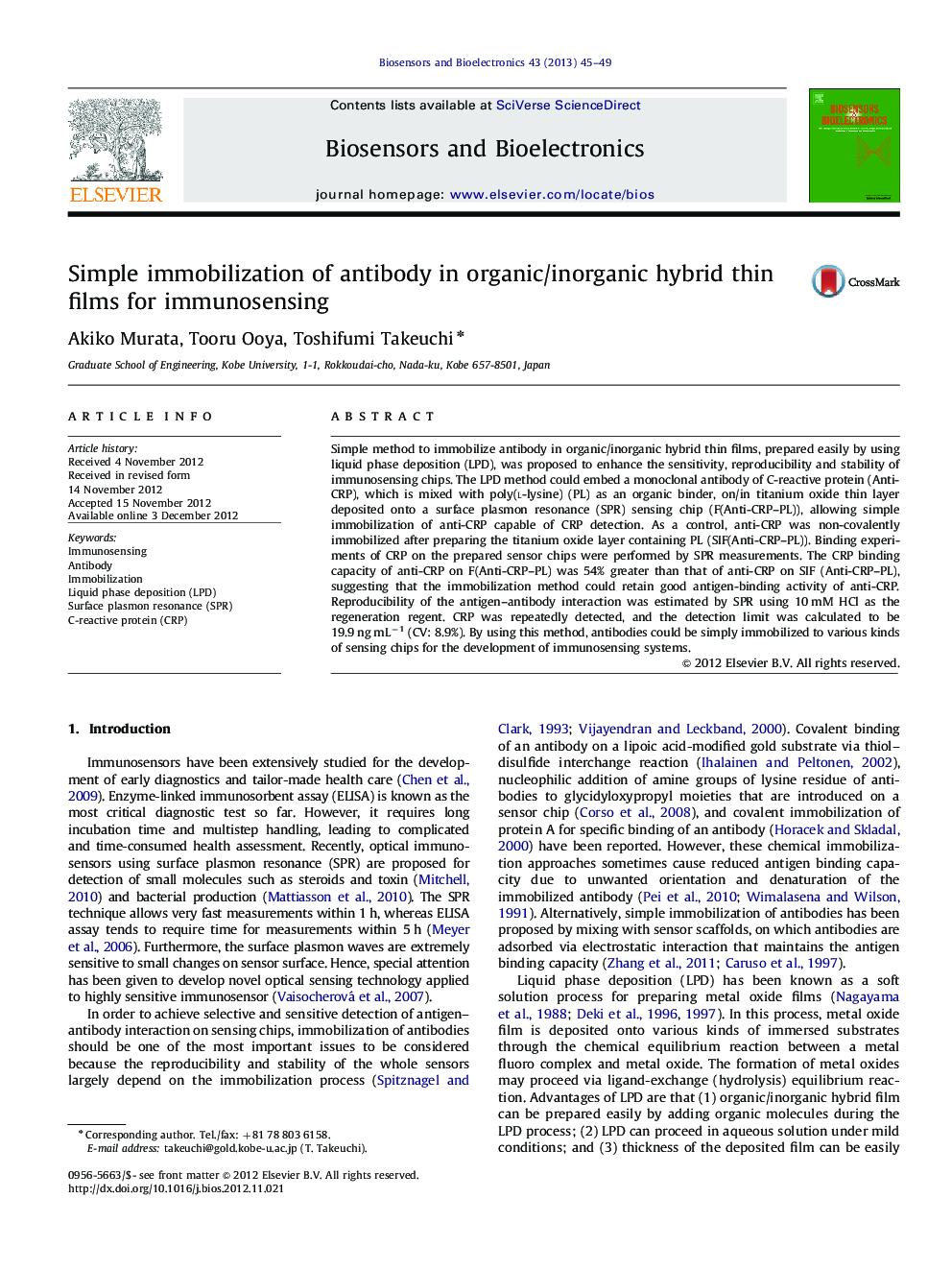| Article ID | Journal | Published Year | Pages | File Type |
|---|---|---|---|---|
| 866825 | Biosensors and Bioelectronics | 2013 | 5 Pages |
Simple method to immobilize antibody in organic/inorganic hybrid thin films, prepared easily by using liquid phase deposition (LPD), was proposed to enhance the sensitivity, reproducibility and stability of immunosensing chips. The LPD method could embed a monoclonal antibody of C-reactive protein (Anti-CRP), which is mixed with poly(l-lysine) (PL) as an organic binder, on/in titanium oxide thin layer deposited onto a surface plasmon resonance (SPR) sensing chip (F(Anti-CRP–PL)), allowing simple immobilization of anti-CRP capable of CRP detection. As a control, anti-CRP was non-covalently immobilized after preparing the titanium oxide layer containing PL (SIF(Anti-CRP–PL)). Binding experiments of CRP on the prepared sensor chips were performed by SPR measurements. The CRP binding capacity of anti-CRP on F(Anti-CRP–PL) was 54% greater than that of anti-CRP on SIF (Anti-CRP–PL), suggesting that the immobilization method could retain good antigen-binding activity of anti-CRP. Reproducibility of the antigen–antibody interaction was estimated by SPR using 10 mM HCl as the regeneration regent. CRP was repeatedly detected, and the detection limit was calculated to be 19.9 ng mL−1 (CV: 8.9%). By using this method, antibodies could be simply immobilized to various kinds of sensing chips for the development of immunosensing systems.
► Simple method to immobilize antibody was proposed by using liquid phase deposition(LPD). ► The immobilization method could retain good antigen-binding activity. ► Antigen was repeatedly detected by surface plasmon resonance (SPR) at least seven times. ► The detection limit was 19.9 ng mL−1 (CV: 8.9%).
